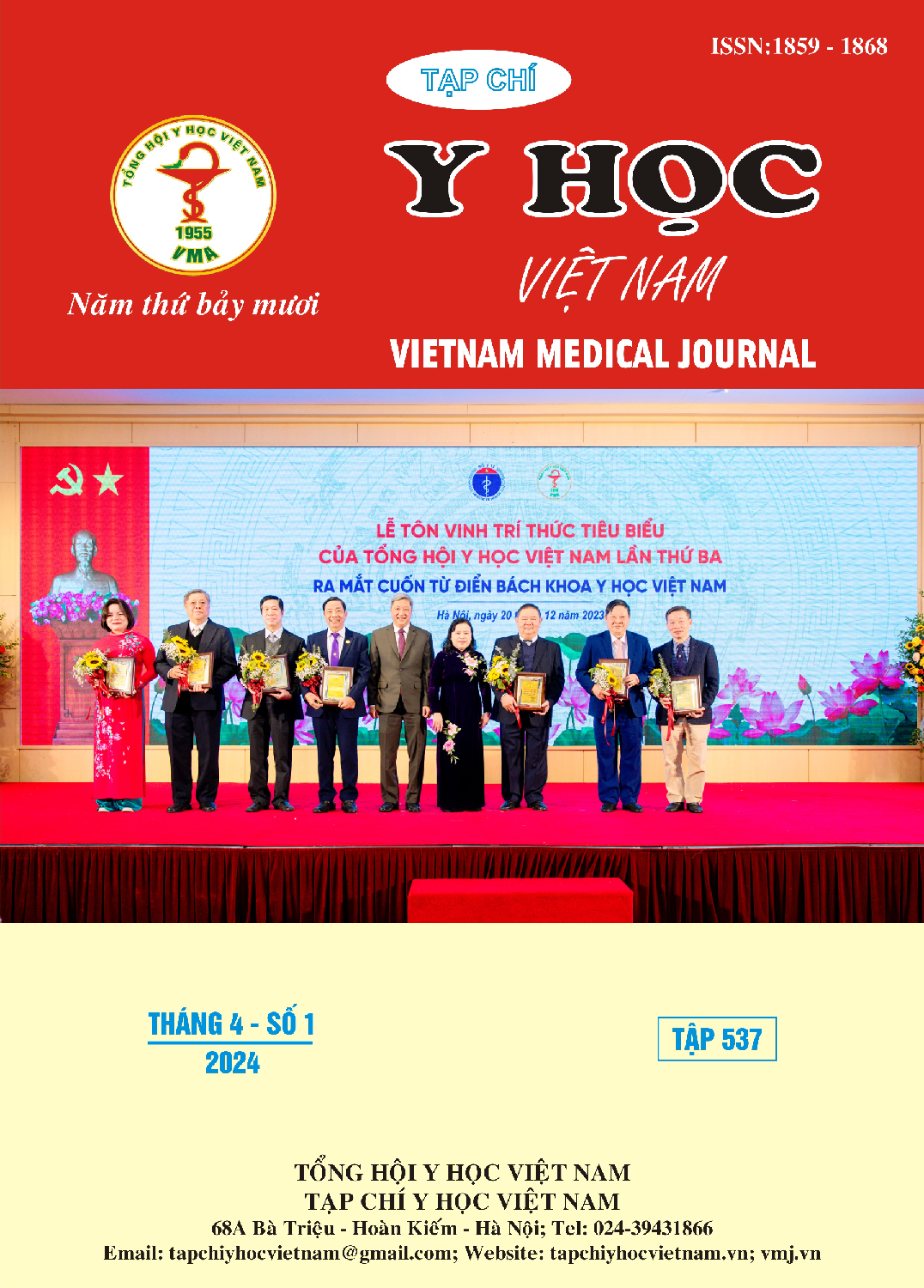SHOULDER ARTHROSCOPIC TREATMENT OF ROTATOR CUFF CALCIFIC TENDONITIS
Main Article Content
Abstract
Introduction: Rotator cuff calcific tendinopathy (RCCT) is a less common pathological condition compared to other shoulder-related disorders. The condition is caused by the accumulation of calcium deposits within the rotator cuff or may manifest partially in the subacromial bursa beneath the acromion when calcification spreads around the tendon. The disease typically presents clinical signs such as rapidly progressing acute shoulder pain during the reabsorptive phase, leading to discomfort and significant limitations in mobility for the patients. Clinical Cases: We would like to present 02 cases diagnosed with RCCT that failed to respond to conservative treatment and underwent arthroscopic surgery for calcification removal. Postoperative, shoulder pain symptoms and range of motion significantly improved. Subsequent X-ray imaging confirmed the absence of calcification. Discussion: Commonly occurring in middle-aged individuals, the acute pain in the shoulder region is a prominent symptom of the disease. The primary treatment for the condition involves conservative measures such as rest, physical therapy, and the use of NSAIDs. Arthroscopic surgery is considered when calcification causes chronic pain that doesn't improve with other treatment methods. Precise identification of the location of calcification through arthroscopy and the removal of as much calcification as possible are crucial in successful surgical intervention. Conclusion: Arthroscopic surgery, a minimally invasive approach, is employed to retrieve the entire calcified mass. Post-surgery, patients experience improved clinical symptoms and a rapid, noticeable restoration of range of motion. Magnetic resonance imaging is crucial for accurately delineating the morphology and location of the calcified mass.
Article Details
Keywords
calcification, rotator cuff, arthroscopy, shoulder joint
References
2. Kachewar SG, Kulkarni DS. Calcific Tendinitis of the Rotator Cuff: A Review. J Clin Diagn Res JCDR. 2013 Jul;7(7):1482–5.
3. Uhthoff HK, Loehr JW. Calcific Tendinopathy of the Rotator Cuff: Pathogenesis, Diagnosis, and Management. J Am Acad Orthop Surg. 1997 Jul;5(4):183–91.
4. Yoo JC, Park WH, Koh KH, Kim SM. Arthroscopic treatment of chronic calcific tendinitis with complete removal and rotator cuff tendon repair. Knee Surg Sports Traumatol Arthrosc Off J ESSKA. 2010 Dec;18(12):1694–9.
5. Kim MS, Kim IW, Lee S, Shin SJ. Diagnosis and treatment of calcific tendinitis of the shoulder. Clin Shoulder Elb. 2020 Nov 27;23(4):210–6.
6. Harvie P, Pollard TCB, Carr AJ. Calcific tendinitis: natural history and association with endocrine disorders. J Shoulder Elbow Surg. 2007;16(2):169–73.
7. Riley GP, Harrall RL, Constant CR, Chard MD, Cawston TE, Hazleman BL. Tendon degeneration and chronic shoulder pain: changes in the collagen composition of the human rotator cuff tendons in rotator cuff tendinitis. Ann Rheum Dis. 1994 Jun;53(6):359–66.
8. Speed CA, Hazleman BL. Calcific tendinitis of the shoulder. N Engl J Med. 1999 May 20;340(20):1582–4.
9. Rochwerger A, Franceschi JP, Viton JM, Roux H, Mattei JP. Surgical management of calcific tendinitis of the shoulder: an analysis of 26 cases. Clin Rheumatol. 1999;18(4):313–6.
10. Jerosch J, Strauss JM, Schmiel S. Arthroscopic treatment of calcific tendinitis of the shoulder. J Shoulder Elbow Surg. 1998;7(1):30–7.


